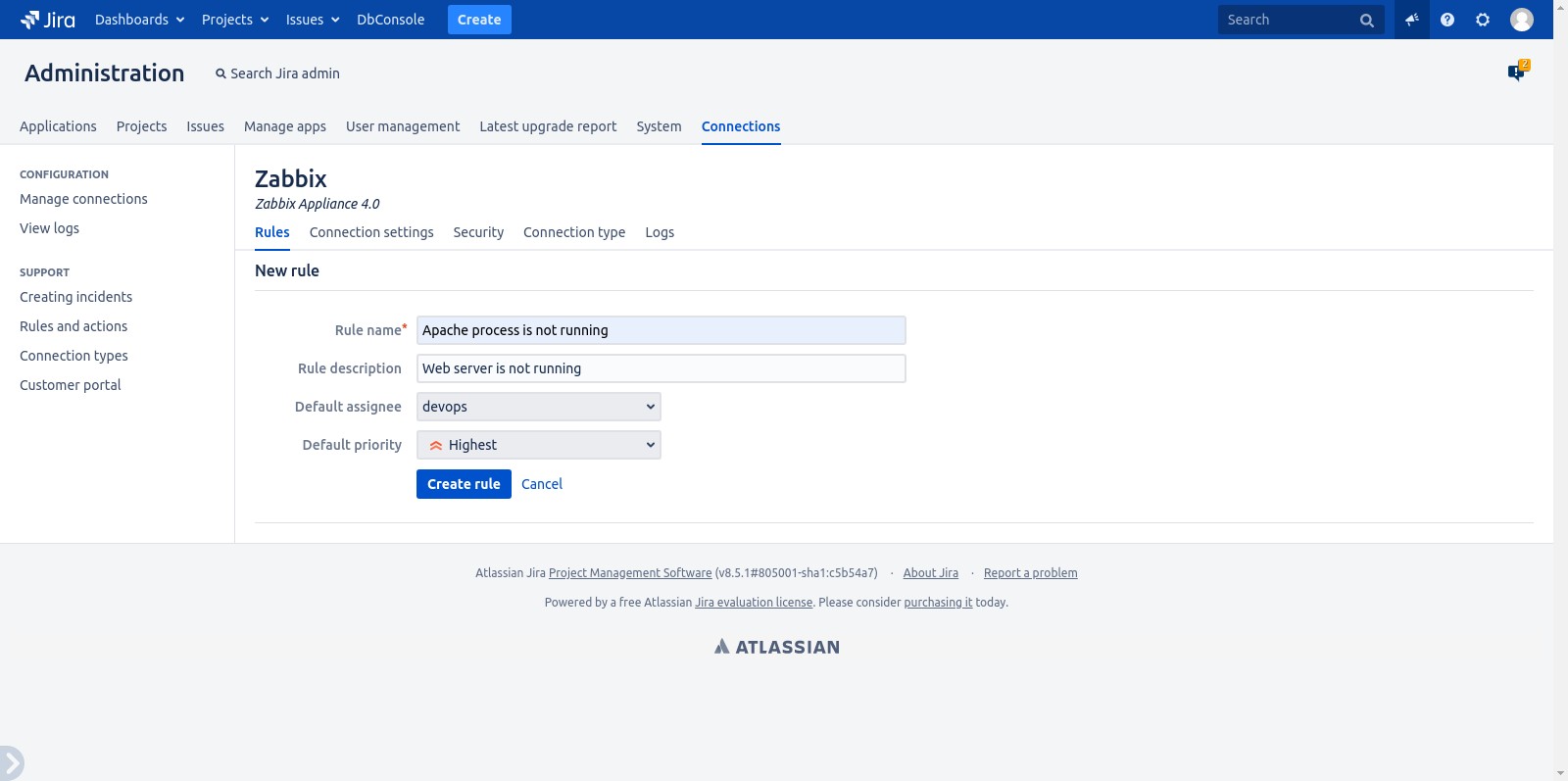Rules
An Alert Catcher rule is condition where alert was sent, for example, "High memory utilization", "Update failed", etc. In different systems, a rule means different entities (for example, in Zabbix, these are triggers). The analogue of a rule in Jira is its components. You can also assign a person responsible for a certain rule as well as for components. Components are bound to the project, and rules are bound to the connection.
Browse all rules
To go to the rules view page from the Manage apps page, click on View in your connection line.
To view all the rules you can go to the tab Rules.
In the screenshot above, you can see that each rule has an Assignee and a Rule action.
Detailed information about Rule action can be found on this page.
If a rule has an assignee installed, the incident created with this rule will be automatically assigned.
Adding a rule
To add a new rule, go to the Rules tab and click New rule. You can select the default assignee for this rule.
You can also automatically create rules when you create new incidents. If you create an incident in which the specified rule do not exist for your connection, it will be created automatically.
Rule management
You can delete/change rules, import them from a third-party system. There is only one limitation for rules: the name of the rules must be unique within a single connection.


